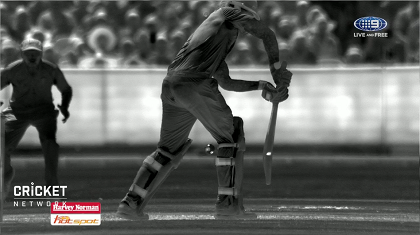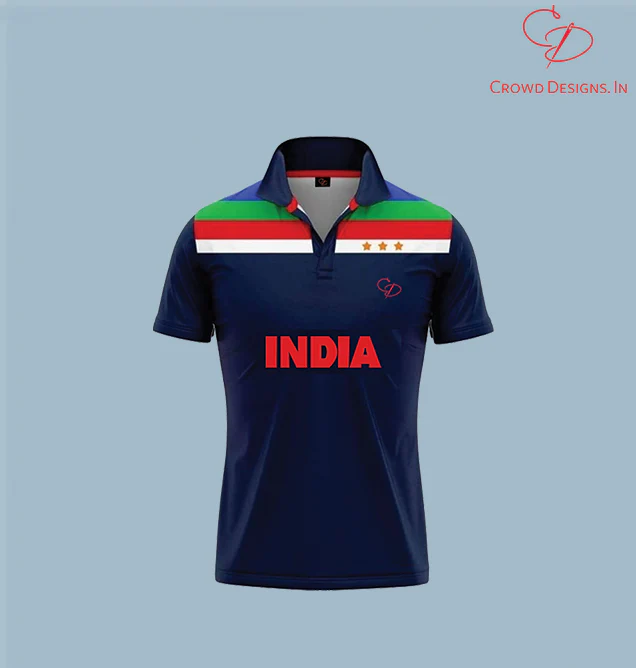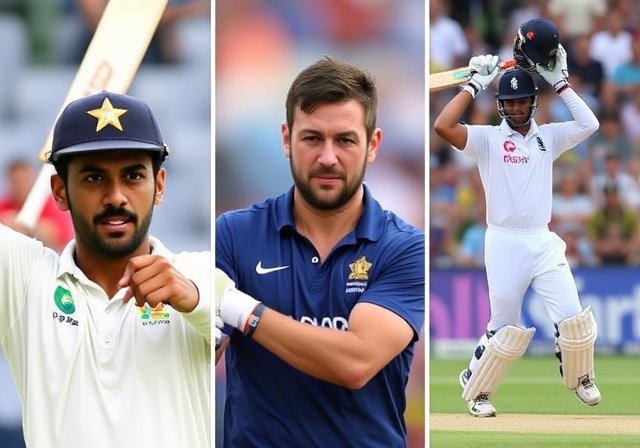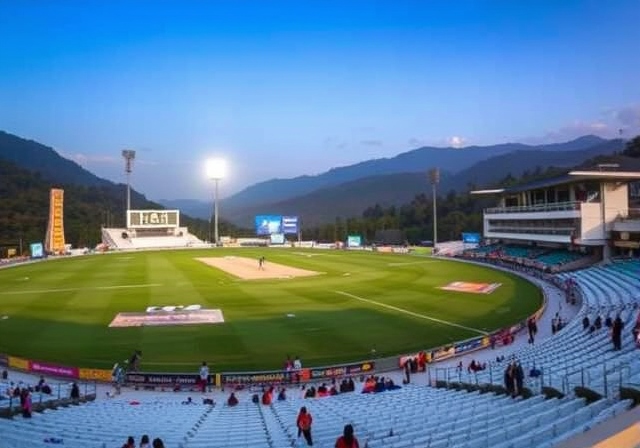HotSpot technology has become a well-known tool in cricket for detecting edges in close decisions, especially in the Decision Review System (DRS). It uses infrared imaging to detect the heat generated by the friction between the ball and the bat or the player’s pads. While it’s widely used in many international tournaments and countries, India has notably avoided using HotSpot technology in its cricket matches. Here are some reasons why India doesn’t use HotSpot technology:

High Costs of Implementation
One of the primary reasons for the absence of HotSpot in Indian cricket is the high cost associated with it. The technology requires specialized and expensive infrared cameras, which are set up at multiple angles around the field. These cameras are sensitive and require a lot of maintenance and calibration.
HotSpot is significantly more expensive than other technologies used in the DRS, like UltraEdge (also known as Snickometer) and Hawk-Eye. For a country like India, which hosts a large number of domestic and international matches, the cost of using HotSpot across all games could quickly become prohibitive. The Board of Control for Cricket in India (BCCI) has traditionally been reluctant to adopt technologies that add to the costs without providing a clear advantage.
Inconsistent Accuracy of HotSpot
HotSpot is not foolproof and has faced criticism for its inconsistent accuracy. In certain situations, especially under challenging lighting conditions or in hot and humid climates, HotSpot has failed to detect edges. Additionally, thin edges or low-friction contacts, like a glancing edge off the bat, may not generate enough heat to be visible on the infrared camera, leading to missed detections.
There have been several instances where HotSpot failed to pick up an edge that was later confirmed by Snickometer or UltraEdge. This inconsistency has raised doubts about its reliability, especially in high-stakes matches where every decision matters. Given these concerns, the BCCI may feel that HotSpot’s unreliability does not justify the investment.
Preference for UltraEdge (Snickometer) Technology
India primarily uses UltraEdge (also known as Snickometer) technology in DRS, which has proven to be a reliable alternative to HotSpot for detecting edges. UltraEdge uses sound-wave analysis to determine if there’s been contact between the bat and the ball. This technology is relatively more affordable than HotSpot and can effectively pick up edges even in difficult conditions.
While UltraEdge also has its limitations, it is generally more reliable for detecting fine edges and provides clearer evidence of contact. The BCCI has shown a preference for UltraEdge, as it offers accurate results without the high cost and maintenance requirements of HotSpot. In fact, UltraEdge is now the standard edge-detection technology in the DRS, even in tournaments where HotSpot is also available, making it the preferred choice for many cricket boards around the world, including the BCCI.
HotSpot’s Vulnerability to External Factors
Another drawback of HotSpot is its vulnerability to external factors like sweat, dirt, and humidity, which can affect the camera’s sensitivity and accuracy. In a country like India, where humidity and heat are common, especially during summer months, HotSpot might not perform as effectively as it would in cooler and drier climates.
In addition, there have been instances where players have deliberately tried to “mask” HotSpot by applying substances like Vaseline to the edges of their bats, reducing friction and making it harder for HotSpot to detect edges. Such issues have led to questions about HotSpot’s robustness as a reliable tool for edge detection.
The BCCI’s Conservative Approach to Technology in Cricket
The Board of Control for Cricket in India (BCCI) has historically been cautious when it comes to adopting new technologies in cricket. For years, the BCCI resisted the implementation of DRS, citing concerns about its accuracy and reliability. While they eventually adopted DRS, their approach to incorporating new and costly technologies has remained conservative.
The BCCI tends to wait until a technology is fully refined and proven before committing to its use. Given HotSpot’s high cost, maintenance requirements, and occasional failures, the BCCI may simply prefer to avoid it rather than risk inconsistent results. This conservative approach may be another reason why India hasn’t embraced HotSpot.
HotSpot Not Being a Mandatory Requirement for DRS
HotSpot is not a mandatory part of the DRS package; it’s an optional tool that cricket boards can choose to add if they feel it adds value. Many countries, like England and Australia, have opted to use HotSpot in their DRS package for international matches, but it’s not required by the International Cricket Council (ICC) to have a complete DRS setup.
Since UltraEdge and Hawk-Eye are considered sufficient for most decision-making scenarios, the BCCI doesn’t see the need to add HotSpot to India’s DRS toolkit. As long as the essential DRS components are in place, the absence of HotSpot does not affect the basic functionality of DRS.
Public Perception and Confidence in DRS
Indian cricket fans are already familiar with DRS decisions based on UltraEdge and Hawk-Eye, and there seems to be general acceptance and confidence in these technologies. Introducing HotSpot, with its known inconsistencies and higher cost, could actually decrease public trust in DRS if the technology were to produce ambiguous results.
The BCCI may feel that maintaining a simpler and more reliable DRS setup with UltraEdge and Hawk-Eye is better for the overall public perception of DRS. With fewer technologies to question or fail, the decisions are likely to face less scrutiny and skepticism from players, fans, and analysts.
Practical Limitations in Domestic and IPL Matches
Implementing HotSpot in India would also require using it in high-profile tournaments like the Indian Premier League (IPL), where the cost and logistics of installing and maintaining the equipment would be even more challenging. The IPL has a packed schedule, multiple venues, and requires equipment that can be set up and transported quickly. The logistics and expense of HotSpot would make it impractical for use in domestic and franchise leagues, especially when UltraEdge is a viable alternative.
The BCCI would likely prefer to have a uniform DRS system for both international and domestic matches, and UltraEdge provides this flexibility without the added complexity of HotSpot.
Conclusion: Why India Doesn’t Use HotSpot
In summary, India does not use HotSpot in cricket largely due to:
- High costs of implementation and maintenance, especially considering the volume of matches in India.
- Inconsistent accuracy in detecting edges, which can lead to disputed decisions.
- Preference for UltraEdge technology, which is more affordable and reliable for edge detection.
- Vulnerability to external factors like humidity and tampering.
- The BCCI’s conservative approach to adopting new and costly technologies.
- HotSpot not being a mandatory part of the DRS package.
- Public perception and confidence in simpler, reliable technologies like UltraEdge.
- Logistical challenges in domestic matches and tournaments like the IPL.
With these factors in mind, the BCCI has decided to rely on UltraEdge and Hawk-Eye as the main components of India’s DRS system. For now, it seems unlikely that India will adopt HotSpot in the near future unless there are significant improvements in its reliability and a reduction in its costs









Leave a Comment